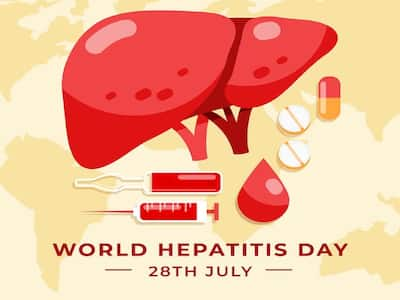
On World Hepatitis Day 2023, Dr. Sharad Malhotra wants to make people aware of the long-term consequences of chronic hepatitis B and C infections.
Chronic hepatitis B and C infections are significant public health concerns, affecting millions of people worldwide. Both conditions are characterized by persistent inflammation of the liver, which can lead to severe complications if left untreated. On World Hepatitis Day 2023, let’s explore the long-term consequences of chronic hepatitis B and C infections.
Here, Dr. Sharad Malhotra, Senior Consultant and HOD, Gastroenterology Hepatology and Therapeutic Endoscopy, Aakash Healthcare, New Delhi, explains about the consequences of untreated hepatitis B and C. Particularly he focuses on liver damage, cirrhosis, and the heightened risk of developing liver cancer.
Chronic Hepatitis B
Chronic hepatitis B infection is caused by the hepatitis B virus (HBV), which can remain active in the liver for extended periods. As the immune system continuously fights the virus, persistent inflammation occurs, leading to gradual liver damage. The consequences of chronic hepatitis B can be severe, especially in cases where the infection progresses unchecked over the years.
Liver Damage
The persistent inflammation in chronic hepatitis B and C infections takes a toll on the liver’s health. As the immune system releases inflammatory mediators, it targets infected liver cells, causing cellular damage and scarring. Over time, this process disrupts the liver’s normal functioning and may lead to liver fibrosis, the initial stage of liver scarring.
Cirrhosis
As chronic hepatitis B and C infections progress, liver fibrosis can escalate into cirrhosis. Cirrhosis is characterized by extensive and irreversible scarring of the liver tissue, resulting in a distorted liver structure and impaired function. Patients with cirrhosis are at a heightened risk of developing complications such as portal hypertension, ascites, hepatic encephalopathy, and oesophagal varices, which can be life-threatening.
Liver Cancer
Perhaps the most concerning long-term consequence of chronic hepatitis B and C infections is the increased risk of developing hepatocellular carcinoma (HCC), the most common type of primary liver cancer. The chronic inflammation caused by the viruses can lead to the proliferation of abnormal liver cells and the formation of tumours. Individuals with cirrhosis, resulting from chronic hepatitis, face an even greater risk of developing HCC.
READ RELATED: I Tried the Pancakes at McDonald's, Denny's, & IHOP—and Only One Chain Makes the Best Stack
Preventive Measures and Treatment Options
Prevention is the key to combating chronic hepatitis B and C infections and mitigating their long-term consequences. Safe surgeries, sterile IV uses, avoiding needle sharing and safe sexual practices is essential. Vaccination against hepatitis B is an essential measure to reduce the incidence of new infections. For those already infected, early diagnosis and appropriate medical management can slow disease progression and prevent complications.
Antiviral medications are the mainstay of treatment for chronic hepatitis B and C infections. They work by suppressing viral replication, reducing liver inflammation, and consequently slowing down the progression of liver fibrosis. In some cases, antiviral therapy can even reverse fibrosis and cirrhosis to some extent.
Regular Monitoring and Lifestyle Modifications
For individuals with chronic hepatitis B or C infections, regular monitoring of liver function, viral load, and fibrosis progression is essential. Lifestyle modifications such as avoiding alcohol, maintaining a healthy diet, and exercising regularly can also support liver health.
Chronic hepatitis B and C infections pose significant long-term consequences on liver health, including liver damage, cirrhosis, and an increased risk of liver cancer. Early diagnosis, appropriate medical management, and lifestyle changes play pivotal roles in mitigating these consequences. A collaborative effort between healthcare providers, patients, and public health initiatives is vital to combat these infections effectively and safeguard liver health in the long run.
Total Wellness is now just a click away.
Follow us on
window.addEventListener(‘load’, (event) => {
// $(document).ready(function(){
$(‘#commentbtn’).on(“click”,function(){
(function(d, s, id) { var js, fjs = d.getElementsByTagName(s)[0]; if (d.getElementById(id)) return; js = d.createElement(s); js.id = id; js.src = “//connect.facebook.net/en_US/sdk.js#xfbml=1&version=v2.3”; fjs.parentNode.insertBefore(js, fjs);}(document, ‘script’, ‘facebook-jssdk’));
$(“.cmntbox”).toggle();
});
// });
});








